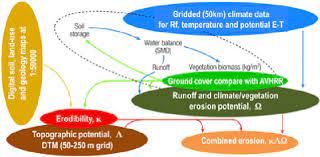Soil erosion risk assessment 2022 Best

This paper explores soil erosion risk assessment in the Africa (Specific province) of watershed, Central Rift Valley of Ethiopia. Increased flooding and newly formed rills and gullies were observed in the central Rift Valley watershed in Ethiopia, over the past three to five years.
Soil erosion risk assessment
This paper explores soil erosion risk assessment in the Africa (Specific province) of watershed, Central Rift Valley of Ethiopia. Increased flooding and newly formed rills and gullies were observed in the central Rift Valley watershed in Ethiopia, over the past three to five years. These events are due to problems related to land-use changes and are adversely affecting land productivity. This study was conducted to quantify, analyze and map soil erosion risk areas using the Revised Universal Soil Loss Equation. Methodology Among available methods for predicting and quantifying soil erosion risks, RUSLE is widely applied by adapting into various situations.
Soil erosion risk assessment
The Universal Soil Loss Equation (USLE) was initially developed for predicting soil erosion from small areas of cultivated land (Bewket and Teferi (2009)). However, remote sensing and Geographic Information Systems (GIS) are now being integrated into RUSLE, in addition to the soil data, to increase the risk assessment precision. Initially, the watershed was delineated by considering contour lines pattern on topographic maps that have been produced by Ethiopian Mapping Agency. The delineated map was verified using the GIS Digital Elevation Model (DEM). https://youtu.be/ZmwSRDP2xGk
Soil erosion risk assessment
The watershed was classified into seven slope categories, by percent (0–2; 2–5; 5–8; 8–16; 16– 30; 30–45; >45), for field data collection, particularly for soil sampling, land use/cover description, and for soil and water conservation support practice analysis. The systematic sampling points were uniformly distributed on Universal Transfer Mercator (UTM) grid points using GIS. NB: I can provide a good and well-documented report on the same research area which we can use 65 per cent of the data. NB: The writer must know about the subject very well and tools such as GIS, Land use, DEM and some material is available on websites and process it and incorrect and scientific way. show
Additional Files







